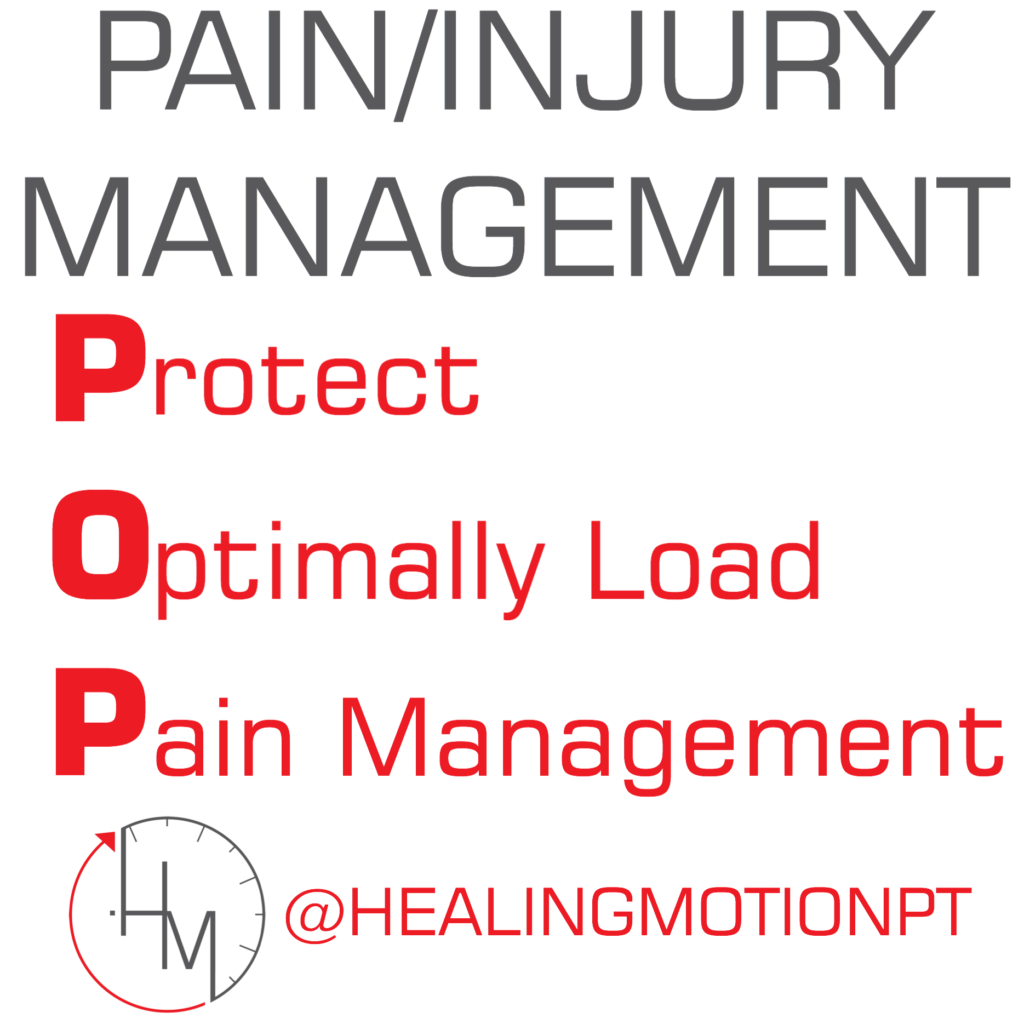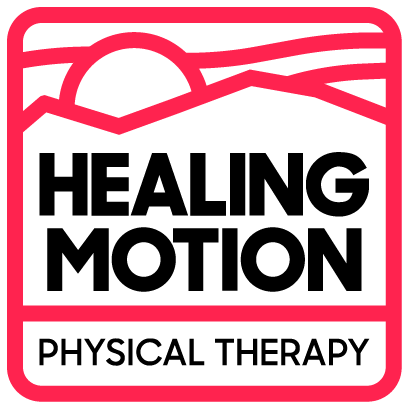RICE (Rest, Ice, Compress, Elevate) has been used to treat injuries since the 1970s when it was first coined by Dr. Gabe Mirkin, MD in his best-selling Sportsmedicine Book, published in 1978. However, we have learned that method is likely not the best way to facilitate healing the fastest, in fact, resting can delay healing and increase pain. Don’t believe me? Dr. Mirkin himself has renounced RICE. He writes about it here. This video also provides a nice summary.
So, what to we do then? POP!

1. Protect
First and foremost, with any injury, you protect it. The initial intent of “Rest” was just this, but you don’t have to rest an injury to protect it. Usually this just requires not doing things that make you have more pain the next day. Sometimes this requires a sling, brace, or tape, but usually just activity modification. If you think you have a serious injury such as a fracture or fully torn tissue, see your medical provider right away! If you don’t think it’s that bad, but need guidance on how to best protect it, see your Physical Therapist. They’ll help guide you through this POP practice specific to your injury.
2. Optimally Load
This is the biggest mindset shift. RARELY, is the optimal load rest. Sometimes it is, but very rarely. We know that people that are as active as able while following these 2 rules, get better faster. When you’re doing your activity…
1. Is it an acceptable level of pain?
2. Do you think it will be worse the next morning?
When in doubt, do a little less activity, prove to yourself that you were fine and then do a little more the next day, and the next, and keep going. Remember, some pain isn’t always bad. Hurt does not always equal harm. Finally, compression does fit into optimally loading. Follow the 2 rules above as you increase your activity, and you’ll be in good shape! The quicker you can work back to your normal every day life and activities with your pain under control, the better!
3. Pain Management
Work to manage your pain to fit the above 2 rules. If your pain isn’t decreasing fast enough with protecting, and the optimal amount of load, you may have to try other strategies. First, we try the bracing/taping methods in the protecting section. Then we can try any kind of pain relief lotions (Icey Hot, Biofreeze, etc) or heat or ice. It’s okay, don’t worry about delaying healing, if it hurts that bad, we have to calm it down and make it hurt less. If that doesn’t work, then you can try to manage with some supplemental anti-inflammatories such as tart cherry or tumeric, and finally you can manage with tylenol or another over the counter pain med. If you must, you can take ibuprofen, but emerging research shows ibuprofen is delaying healing too, so we try to avoid it if we can. Always consult your physician before taking any medications. The goal of pain management is to allow you to load more with your optimal load which will help you get better faster.
So, there it is. If you can apply POP to your recovery from any injury, you will heal and return to your every day life and activities faster. So, get out there and avoid any body parts POPping, but if they do, apply the POP method of recovery and you will get back to your goals as quickly as possible! If you want more resources for pain management, check out our Pain Resources page here! Also, if you feel like PT can better help you manage your pain, don’t hesitate to schedule with us here.
Finally, if you found this content helpful, give us a follow on social media.
Instagram: @healingmotionpt
Facebook: @healingmotionpt
Twitter: @healingmotionpt
YouTube: https://www.youtube.com/healing-motion-physical-therapy
Move. Heal. Excel.
Healing Motion PT Team

